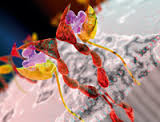US drugmakers have reacted with fury to two separate calls by Members of Congress for official inquiries into allegations of industry ‘price gouging’ in anticipation of healthcare reform.
US drugmakers furious over price probe demands
Home/Pharma News
|
Posted 10/12/2009
 0
Post your comment
0
Post your comment

Leaders of two powerful House committees have asked the Government Accountability Office (GAO) for “an expedited report on recent trends in prescription drug pricing” and a proposal for monitoring pricing practices, after recent studies and a report in the New York Times suggested that drugmakers may be artificially raising prices ahead of the health reform legislation now going through both houses of Congress and which could adversely affect drug price growth.
New analyses suggest that brand-name drug prices rose more than 9% last year and over 35% since 2006, say Democratic Representatives Charles Ranger, Henry Waxman, Pete Stark and John Lewis, in their letter to the GAO. “These price increases cannot be explained by increases in the Consumer Price Index (CPI), which fell last year. Pharmaceutical manufacturers used the same tactic before the start of Medicare Part D, raising drug prices dramatically in anticipation of gaining millions of new insured customers”, add the legislators, who lead the House Committees on Ways and Means, and Energy and Commerce.
And in the Senate, Democrat Bill Nelson of Florida has written to the Inspector General of the Department of Health and Human Services (HHS) requesting “an immediate and thorough investigation into drug industry pricing and recent increases, and the extent to which these increases may affect the Medicare and Medicaid programmes”.
“I want to know if there's a back-door move under way by the drugmakers to recover some of the concessions they’ve promised for healthcare reform,” he said.
The legislators’ demands follow the publication of a report last week by the US seniors’ group AARP (formerly known as the American Association of Retired People), which claims that manufacturer prices for widely-used branded drugs have increased 9.3% since October 2008, considerably higher than the average 5.8%–8.3% of the past seven years, and against a 1.3% decline in the CPI. Ninety-six percent of brand-name drugs’ prices have gone up in the last year, it adds.
“The pharmaceutical industry should be embarrassed when it sees its own price increases put side-by-side with the general inflation rate. Even as the cost of most goods and services drops, a person taking just one brand name drug now pays US$200 more per year than a year ago”, said AARP Executive Vice President John Rother.
The New York Times article quoted both the AARP study and new research by Credit Suisse Analyst Catherine Arnold, who reports that the list prices of drugs made by the USA’s eight biggest drugmakers rose 8.7% on average during the 12 months ending 30 September 2009.
These price increases will add more than US$10 billion to the US drug bill, which is forecast to surpass US$300 billion this year, and at least one analysis puts this as the highest annual rate of drug price inflation since 1992, says the New York Times.
The Pharmaceutical Research and Manufacturers of America (PhRMA) has fired off a number of angry responses to these claims, accusing the AARP of “trying to muddy the waters for its own political gain” and of having “a skewed view of the world in which medicines are always looked at as a cost and never seen as a saving”.
“It’s pretty obvious that the calls to hold hearings or involve GAO are based on the misleading use of statistics and sensationalised media reports,” says PhRMA Executive Vice President Ken Johnson. In fact, he adds, the CPI shows prescription drug prices grew 2.7% in the 12 months to September 2009, not 5.4% as cited by AARP, while prices posted on www.medicare.gov show that average annual growth for the products identified by the Association as top-selling was 3.3% over the last three years, less than half the 7.4% annual average cited by AARP.
“The group’s conclusions are based on incomplete information, because they do not take account of discounts and rebates that can significantly lower the cost of many brand-name drugs, benefiting patients nationwide, but you wouldn’t know it by looking at pharmacy prices – or reading the New York Times,” Mr Johnson says. According to him, the newspaper article only tells half a story, using selected statistics to make a flawed assumption that an increase in drug prices must somehow be tied to healthcare reform.
“Here’s the real truth: financial results for nearly a dozen of our companies show zero revenue growth in the third quarter and -3% year to date. And it doesn’t appear to get much better down the road,” says Mr Johnson.
Reference:
Taylor L. US drugmakers’ fury over price probe demands. PharmaTimes. 2009 Nov 2009.
Source: PharmaTimes
Guidelines
New guidance for biologicals in Pakistan and Hong Kong’s independent drug regulatory authority
Canada poised to remove requirement for Phase III trials for biosimilars
Policies & Legislation
Argentina streamlines drug approval process
ANVISA tackles 24-month backlog in biologicals post-registration petitions
Most viewed articles
The best selling biotechnology drugs of 2008: the next biosimilars targets
Global biosimilars guideline development – EGA’s perspective
Related content
Formycon signs new aflibercept biosimilar pacts and launches ranivisio in Europe
Bio-Thera and Stada expand biosimilars alliance to include tocilizumab
Global partnerships for biosimilar commercialization announced
New denosumab and ustekinumab biosimilar launches in US, Canada and Japan
Formycon signs new aflibercept biosimilar pacts and launches ranivisio in Europe

Home/Pharma News Posted 13/11/2025
Bio-Thera and Stada expand biosimilars alliance to include tocilizumab

Home/Pharma News Posted 20/10/2025
New denosumab and ustekinumab biosimilar launches in US, Canada and Japan

Home/Pharma News Posted 10/07/2025
The best selling biotechnology drugs of 2008: the next biosimilars targets







Post your comment